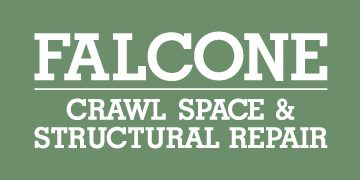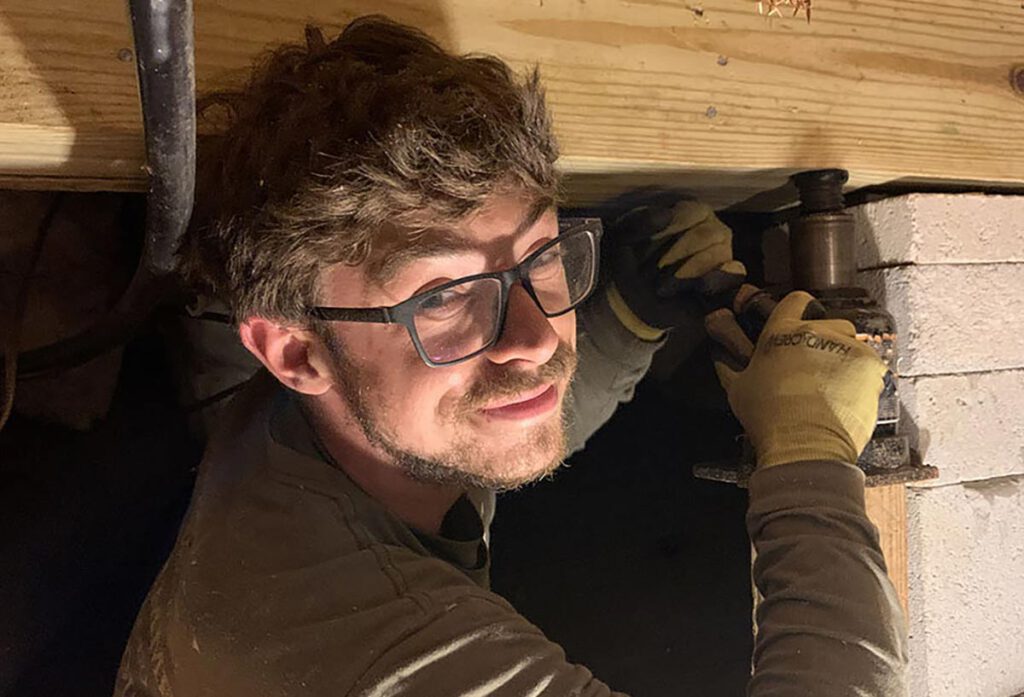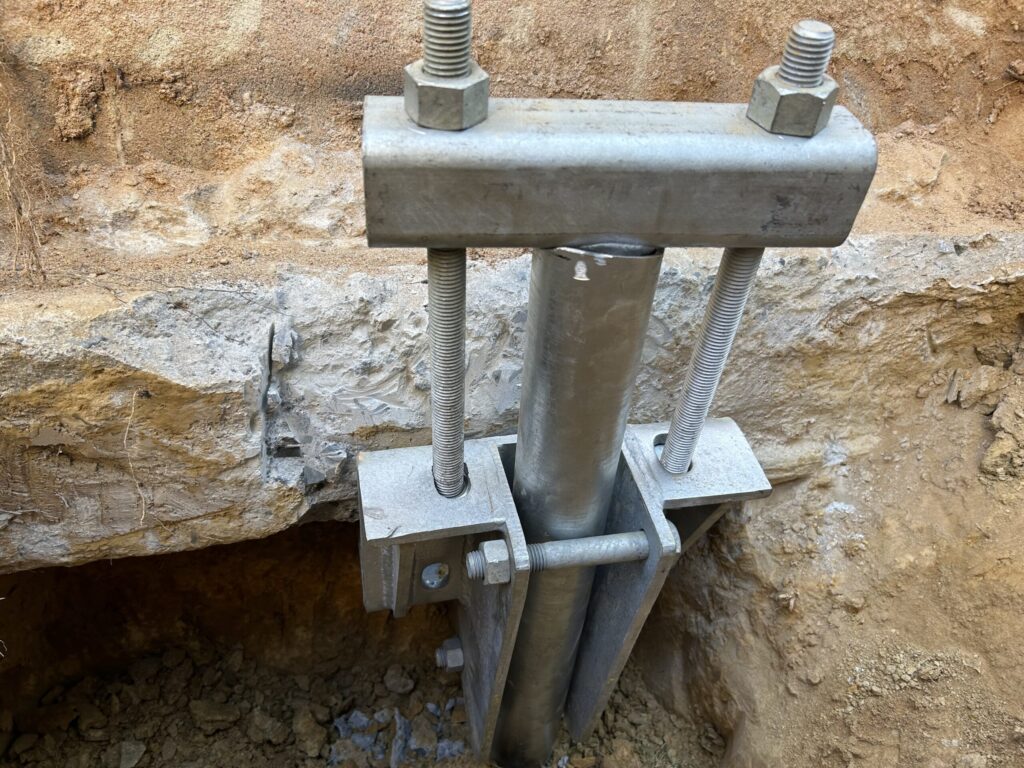Don’t Screw Up: Your Guide to Helical Pier Installation

The condition of the soil surrounding your home can have a disastrous effect on your foundation. As excess moisture causes the soil to expand, the extra pressure can cause your foundation to heave at one end. When the soil loses moisture and contracts, your foundation may sink or settle. Too much moisture or water can cause washout and or settling as well.
In both of these situations, a helical pier installation can restore and protect your Charlotte home’s foundation.

What Is a Helical Pier?
A helical pier is a large steel shaft with helical plates attached at even intervals. The pier resembles an enormous screw, which is why they’re also known as screw piles. A foundation repair company, such as Falcone Crawl Space & Structural Repair, will use hydraulic equipment for helical pier installation, pushing the piers deep into the ground.
These deeper foundation supports reach beyond the upper layers of soil, extending to the bedrock. This depth compensates for any moisture issues affecting your foundation. They also have sufficient load-bearing capabilities to support any home. They can lift a sinking or heaving foundation in addition to providing long-term support.
Once the helical piers are in place, you can proceed with other foundation repairs. This might include repairing cracks in the walls, adding waterproofing measures, or encapsulating your crawl space. Since the helical piers will prevent additional damage, it’s usually better to schedule helical pier installation before conducting any other repairs or foundation renovations.
Why Would You Need a Helical Pier Installation?
Property owners looking for information about helical piers find that they solve a variety of issues caused by a sinking or heaving foundation. You’ll be able to repair cracks in your interior and basement walls, and the slants in your floors will also be corrected. Lifting your foundation will force your window and door frames back together, resolving any issues you have had in opening or closing doors and windows.
How Long Do Helical Piers Last?
When your foundation repair contractor installs piers with the correct load capacity, you can expect them to last for 120 years. In many cases, this foundation support system will last longer. Most companies like Falcone Crawl Space and Structural Repair offer Lifetime warranties.
What Are the 5 Steps in a Typical Helical Pier Installation?
There are five basic steps to a helical pier installation. The time it takes to complete each step will depend on the condition of your foundation, the soil grade, property features, and other considerations. You’ll get a more accurate assessment through the inspection, which is the first step in this process.
1. Home Inspection
The inspection will include examining your foundation’s condition, but it will also involve taking a look at the damage to the rest of your home. Many conditions, such as sloping floors or separating window and door frames, are the result of a shifting foundation.
By the end of the inspection, the foundation repair contractor will provide you with a full report. The contractor will recommend helical pier installation if you live in a single-story home or your home’s weight meets the ideal conditions for this option.
2. Installation Prep Work
The next step in this process is to prepare your property for the installation of the helical piers. This will involve taking measurements and using painter’s tape to temporarily mark your home. The team will install the piers every six feet. At each location, the installation crew will excavate holes measuring three feet by three feet to a depth of 18 to 24 inches, or until the footing is exposed.
If you have a paved driveway or concrete walkways around your home, the excavation may involve breaking up these materials. This can add to the project’s cost since asphalt and concrete surfaces will need repairs after the screw pile installation.
3. Helical Pier Installation
At this point, your property is ready for the installation. The work crew will use torque motors that are specifically designed to screw the piers into the earth. The piers will get driven down until there is sufficient resistance by the bedrock. Each pier will go through this same installation process.
4. Lifting and Stabilizing the Foundation
The next step is to lift your home’s foundation. Ideally, the piers should be able to lift your foundation to its original position. When this isn’t possible without causing additional foundation damage, the torque on the piers will lift your foundation as closely to the original position as possible.
5. Final Inspection and Walkthrough
Once the installation is complete, your foundation repair contractor will make a visual examination of the cracks in your foundation, stucco walls, and other surfaces. They will also take floor measurements to ensure the piers have restored the proper elevation and leveling.

Trust the Experts With Your Foundation Repair
Thinking your foundation is in need of a helical pier installation? Has this blog finally convinced you? Give Falcone Crawl Space & Structural Repair a call or email. We are happy to take on any Charlotte helical pier installation or any project in North or South Carolina. Just know, in order to do this work, there will have to be a structural engineer’s initial inspection, before the work can start. The engineer will then also sign off on the work before it has begun, adding to the overall cost. But this lets you know that the work is done absolutely correctly.




